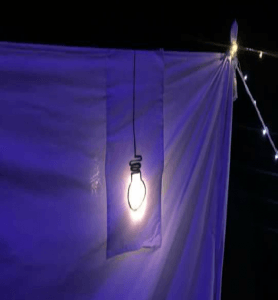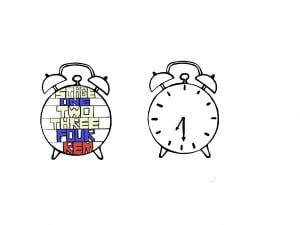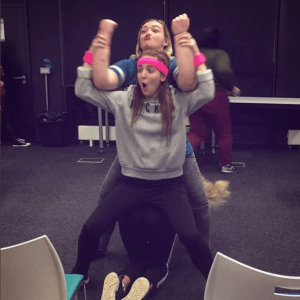Today was the day of our tech and everything went to plan! I had already designed and programmed sound on my MacBook Air which I distributed to the LPAC’s computer in the tech box, and it was only the sound levels that had to be configured in the space, which took half an hour. We programmed lighting in an hour, as the lighting design had already been decided beforehand. We were, therefore, able to test all of the effects we wanted in terms of lighting, and we were able to start packing down with half an hour to spare!
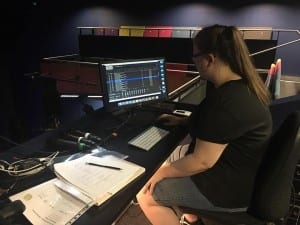
(McKay, 2018)
There were a few lighting effects we wanted to try, one being the flickering light bulb which had been drawn onto the sheet for our set. The flickering light was created by a profile behind the sheet which had been focused towards the drawing of a light bulb. We programmed it to flicker eight times when certain lines were said in the night terrors scene. The flickering of the light represented the night terrors manifesting themselves in dreams into what is perceived by those involved as ‘reality’. Amanda (set designer) and I, worked together when designing the lighting for the set in order to ensure that the light picked was able to produce the right effect behind the sheet. The alternative option, if this did not work or venues were not able to provide a profile, was a manual torch behind the sheet which would have been turned on and operated by a cast member.
(Denby, 2018)
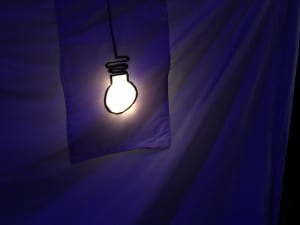
(Denby, 2018)
On the day of the tech I also wanted to try the darkness level in the insomnia scene, incorporating a hint of blue. The reasoning behind this was because this section was in the first stage of the sleep cycle, and I wanted to show that the performers, who were showcasing the verbatim, had turned off the lights in their rooms, switched on their night light and was attempting to get to sleep. I chose to not have a blackout as I wanted the audience to see the subtle movements performed by the cast.
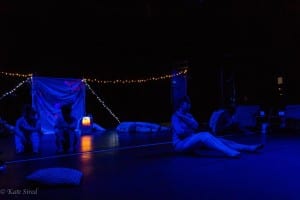
(Sired, 2018)
C.D.
Works Cited
Denby, C. (2018) Light bulb flickering on the sheet [ video].
Denby, C. (2018) Light bulb powered by profile behind the sheet. [image].
McKay, C. (2018) Myself programming/ editing sound on tech day! [image].
Sired, K. (2018) A brand new theatre company! This show was incredible and I am so grateful for being asked to take photos during their dress run. Good luck for the future guys, I’m excited to see what’s in store! Sherbet Lemon Theatre. Katie Sired. Available from https://www.facebook.com/KSIREDPHOTOGRAPHY/ [accessed 21 May 2018].
Sleep.org (undated) What Colours Are Soothing for Sleep. National Sleep Foundation. Available from https://sleep.org/articles/best-colors-for-sleep/ [accessed 12 March 2018].
